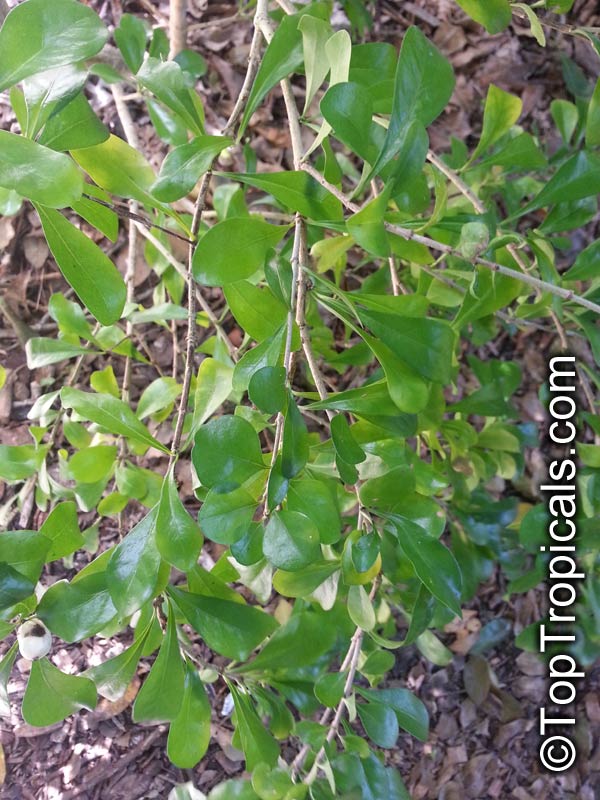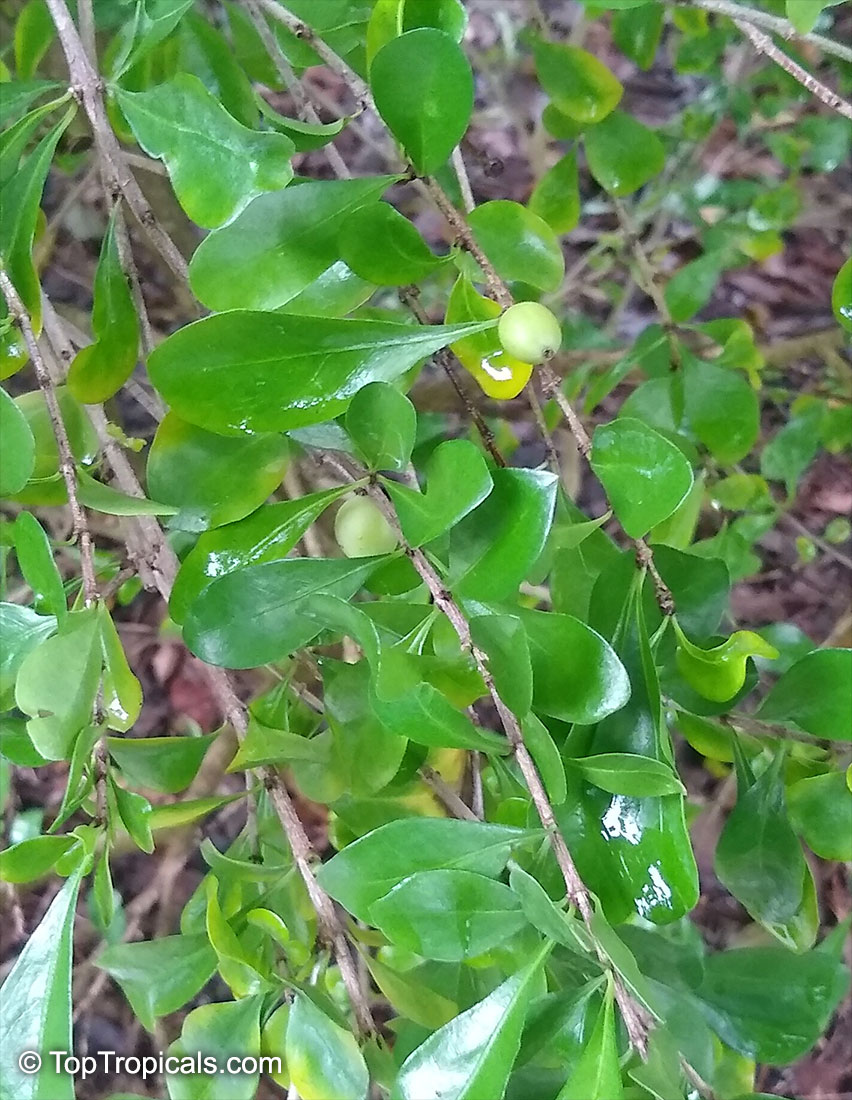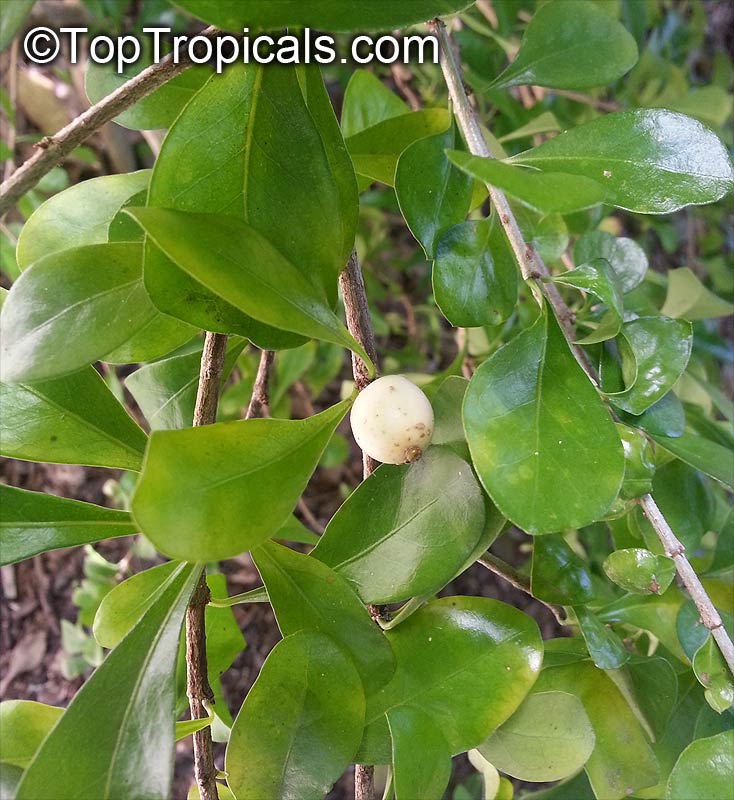Randia aculeata (White Indigoberry)
Top Tropicals Plant Encyclopedia
Botanical name: Randia aculeata
Common name: White Indigoberry
Family: Rubiaceae
Origin: Central America









Randia aculeata loves the sun and should be planted in full sun for best growth and flowering. It will grow in partial shade as well, but flowering will be reduced. When young, Randia aculeata is often confused with a variety of other shrubs with reddish-colored spines. This is a large shrub, five to 10 feet tall and 5-6 feet wide. It is usually rounded and spreading in form, although it can be trained as a small tree.
Grown in USDA Zone 9-11, Randia aculeata is a very drought-tolerant and salt-tolerant plant. It will require regular waterings but can go extended periods without unless it is in extreme heat. It is a rare plant on the seaside but is tolerant of salt spray and windy conditions.
Randia aculeata has long been used for medicinal purposes in its native region of Central America. The fruits of the plant are often made into teas and used to ease indigestion and bring down fevers. It has also been used to treat respiratory problems, jaundice, and rheumatism. In addition to its medicinal uses, Randia aculeata is also a great plant for attracting butterflies, hummingbirds, and bees to the garden.
In potting for cool regions, Randia aculeata should be grown in part sun to light shade and be protected from severe cold. It should be in a well-draining potting soil and watered regularly, although it should not be kept constantly moist. It is a moderate feeder and should be fertilized lightly in spring and summer. In winter, water it sparingly and give no fertilizer. The Randia aculeata shrub can become root bound so repotting may be necessary every few years. If needed, the plant can be pruned lightly in late winter to shape.
Similar plants: Randia aculeata (White Indigoberry)
- Atractocarpus fitzalanii (Native Gardenia)
- Catunaregam taylorii (Catunaregam)
- Euclinia longiflora (Angel's Trumpets)
- Randia formosa (Blackberry Jam Fruit)
- Randia maculata (Terompet Gading)
- Randia siamensis (Fragrant randia)
- Randia sp. (Gardenia Star of Africa)
- Randia sp. ''Joseph Fondeur'' (Randia)
- Rosenbergiodendron longiflorum (Angel of the Night)


